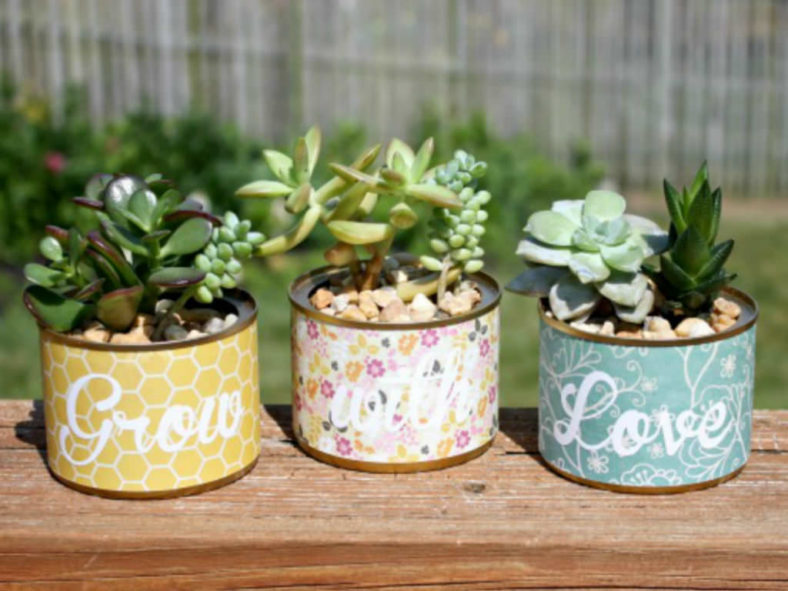If you can choose, always get a pot with good drainage or drill one yourself. However, if you are growing succulents indoors and want to use pots without drainage holes and not worry about water coming out of the bottom, a few tricks can help you minimize the risk of killing your plants.
The Root of the Problem
For succulents to stay healthy, their roots need air. Overwatering causes many diseases, and your plants may succumb without taking steps to prevent wet roots.
Scab is a disease caused by excess water. Symptoms include corky brown scabs appearing on the stems of the succulents. Some cacti are especially susceptible to scab. Therefore, decrease watering and increase light to fight scab.
Stem and root rot can kill overwatered succulents. Various soil fungi multiply in the presence of excess water. The plant wilts, and a brown or black ring appears above the soil at the stem base. If only the roots show disease, cut away rotted roots with a sharp knife and repot the plant in sterile soil. Wipe the blade between cuts with a cloth soaked in rubbing alcohol to help prevent the spreading of the fungi.

Working With Containers That Do Not Drain
A few tricks help minimize the risk of diseases from wet soil. The main trick is to water the plant normally, but after a few minutes, tip the planter sideways and drain out excess water.
Double potting helps overcome the problem of a planter without drainage holes. Grow the succulents in a pot liner or smaller container inside the larger non-draining container. If the liner or small container does not have drainage holes, make at least four. Layer the bottom of the larger outer planter with gravel.
After watering the plant, wait a few minutes for excess water to drip out of the smaller container. Then, lift the plant in the liner from the larger container and dump the excess water. After draining, place the liner or small planter back inside the larger one.
If the container does not have drain holes, you must be more careful when watering. First, water the plant only enough to wet the soil's top inch (2.5 cm). Then allow the soil to dry completely before watering again. It should only need watering once every two weeks.
Potting Soil Choices
Succulents require loose, draining soil. Cactus or succulent soil from the garden center works, or you can mix your own. When preparing the soil for a container, use a mixture that contains equal portions of sand and garden soil. If your budget allows, a better soil mixture equals loam, sand, and perlite.
Test the soil's quality by moistening a handful of the mixture and trying to squeeze it into a ball. If it is the proper consistency for succulents, the soil will not become compacted but will fall apart.
Fertilize Lightly
Cacti only require fertilizer once or twice yearly, during spring and summer, while other succulents should be fertilized three to four times during the summer. Choose a houseplant fertilizer such as 3-7-7 that has more phosphorus than nitrogen.
Dilute the mixture to one-half the standard concentration recommended on the product label, so mix 5 to 10 drops in 1 quart of water instead of 10 to 20 drops. Check the instructions, as rates vary by brand. Soak the top 0.5 inches (1.2 cm) of soil around the plants thoroughly. Use the fertilizer solution in place of regular watering.
The Right Light
Succulents need the right amount of light to keep them healthy. Outdoors, place them in full sun or partial shade. Indoors, placing the planter near a sunny window should provide enough light, but a cool white fluorescent tube is a good substitute if direct sunlight is lacking. Place the tube 6 to 12 inches (15 to 30 cm) above the plant for 14 to 16 hours daily. Use a timer to help automate the process.
Source: ehow.com
Links
- Succupedia: Browse succulents by Scientific Name, Common Name, Genus, Family, USDA Hardiness Zone, Origin, or cacti by Genus